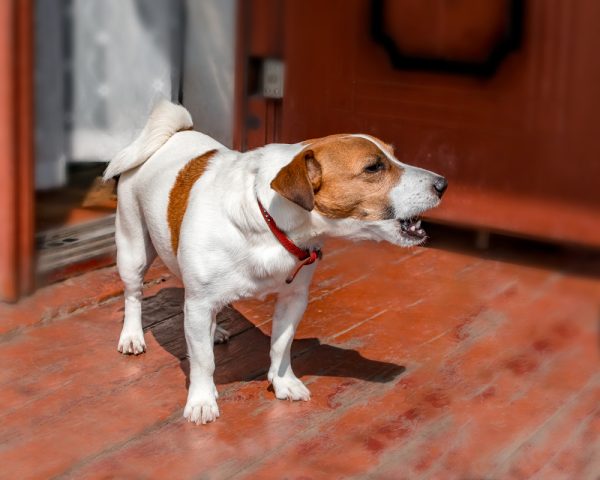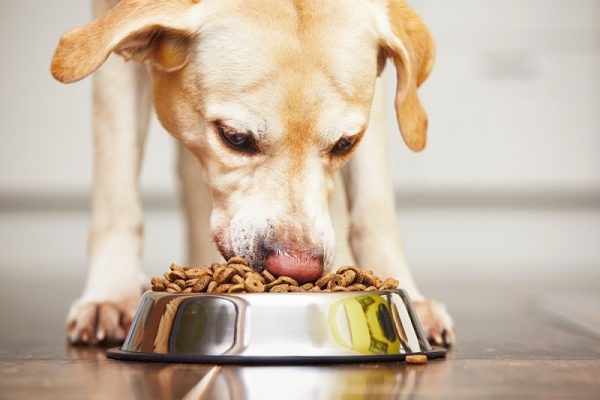In this article
The Beauceron and the Doberman are similar in a lot of respects: the main coloring for both is the same, giving them a similar overall appearance, they are both protective dogs, and they are both considered intelligent.
However, despite these similarities, there are plenty of differences between the two. The Beauceron has a thicker coat and is generally more laid back and friendlier than the stoic Doberman, with its alert and work-like attitude. And beyond the black and rust color points, the two breeds come in different colors. They also have different histories, hailing from different countries, although this isn’t evident from their appearance.
Below, we look at the differences, and some of the similarities between these two breeds to help you determine which is the right breed for you.

Visual Differences

At a Glance
- Average height (adult): 24–27 inches
- Average weight (adult): 70–100 pounds
- Lifespan: 10–12 years
- Exercise: 5+ hours a day
- Grooming needs: Moderate
- Family-friendly: Yes
- Other pet-friendly: Usually
- Trainability: Intelligent, eager to please
- Average height (adult): 24–28 inches
- Average weight (adult): 60–100 pounds
- Lifespan: 10–12 years
- Exercise: 5+ hours a day
- Grooming needs: Moderate
- Family-friendly: Yes
- Other pet-friendly: Usually
- Trainability: Intelligent, eager to please

Beauceron Dog Breed Overview

The Beauceron was bred in the 16th century in France. It was used as a guardian to protect livestock from wild animals and thieves. It was used in this way for several hundred years, but in the 19th century, it also became popular as a guard dog. Today, its intelligence, high energy levels, and loyalty mean that it is still used for both purposes, while also proving to be a good family pet and companion dog.
Personality / Character
The Beauceron is considered a loving and affectionate dog that is loyal to its owner. It is also highly intelligent, and this combination means that it is an easy breed to train using positive reinforcement techniques.
The breed is level-headed and its approach to herding is to stay back and stay calm, unlike heelers that get up to the livestock and nip at heels. The Beauceron has a similar attitude at home although it will always welcome love and attention from its owner. The breed is a herding breed, which means that it may display some herding attributes in the home.
Training
High in intelligence and eager to please its owner, the Beauceron is easy to train, but it does not respond well to aggressive training techniques. Early training will help ensure that the breed does not attempt to run the proceedings, and it can prove helpful in training out its herding instincts.
As well as early training, socialization is a good idea. Although the breed is friendly and will usually get along with all people and animals it meets, socialization will get the dog used to new situations and a range of different people and groups.

Health & Care
The Beauceron has a thick double coat, but it doesn’t require much in the way of grooming. You should brush a couple of times a week to help ensure that your Beau is comfortable and cool. You should trim nails when required, typically every 2–3 months, and ensure that you brush their teeth regularly.
The breed is energetic and does require regular exercise. As well as daily walks, consider enrolling in agility classes or some kind of canine sports to provide physical activity and to keep the intelligent breed’s mind fulfilled. The breed is hardy and generally healthy but may be prone to bloat and hip dysplasia.
Suitable For:
Families and owners that have time to provide physical exercise and mental stimulation. The breed may not be ideal for families with very young children because of its instinct to herd.
- Intelligent
- A generally healthy breed
- Loyal and loving
- Tendency to herd
- Requires plenty of exercise

Doberman Dog Breed Overview

The Doberman originates from Germany and is a relatively new breed, having been first bred in the 19th century. A tax collector named Louis Dobermann wanted a breed that would protect him and guard him while collecting taxes. It is believed that he used several breeds including the German Pinscher, Rottweiler, and German Shepherd, to create what we now know as the Doberman.
The breed continues to be used as a guard dog but has also proven effective as a police dog and has served in the forces, worked as a search and rescue dog, and makes a good family pet.
Personality / Character
Considered the fifth most intelligent dog breed, the Doberman is also stoic and alert—properties that make it good as a guard dog and make it relatively easy to train for experienced hands.
Despite having a reputation as an aggressive dog, the Doberman is loyal and loving with family, and pet Dobermans will get along well enough with other people. Training and socialization are important to help ensure that your Doberman fits well into the family.
Exercise
Requiring an absolute minimum of 1 hour of exercise a day, but ideally an hour and a half or more, the Doberman is an energetic and powerful dog. Canine sports are a good idea because they will allow the dog to use its muscular build and give it an outlet for its intense energy levels.

Training
The Doberman is a good dog for training. It is highly intelligent, hence its use in such a wide variety of different canine jobs and roles. It is also keen to work and will usually relish a challenge. The dog was bred for guarding, which means that it will instinctively look to protect you and your family, so socialization is especially important because it will ensure that the dog doesn’t try to protect you from strangers.
Health & Care
Although the Doberman is considered a generally healthy dog, the breed is known to be susceptible to cardiomyopathy, Von Willebrand’s disease, wobbler’s syndrome, as well as bloat and eye problems. General maintenance is similar for the Doberman, so you should expect to brush twice a week, clip nails every couple of months, and brush their teeth regularly.
Suitable For:
The Doberman has an unwarranted reputation for being aggressive. While it is true that the breed makes a good guard dog, early socialization helps ensure that this breed won’t be overprotective.
It is a good breed for families and individuals that want a loyal dog that is easy to train using the right techniques and that has the time and inclination to provide regular, hard exercise.
- A generally healthy breed
- Loving and gentle with family
- Loyal to family
- Unwarranted reputation for being aggressive
- Needs plenty of exercise and activity

Which Breed Is Right for You?

There are a lot of similarities between the Beauceron and the Doberman. They are a similar size and can have a similar appearance, although the Beauceron has a thicker double coat. They are both energetic and lively dogs, too, although the Beauceron’s breeding as a herding dog means that it may exhibit some herding tendencies while the Doberman’s history as a guard dog means it can be very protective of loved ones.
Either breed is a good choice for active families with plenty of time to dedicate to providing healthy exercise and mental stimulation. If you’re looking to avoid a herding tendency, the Doberman is the better choice, and if you want something with a slightly less pronounced guarding tendency, the Beauceron may be the better option.
Featured Image By: Dogster/Shutterstock




















